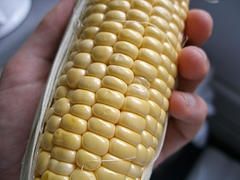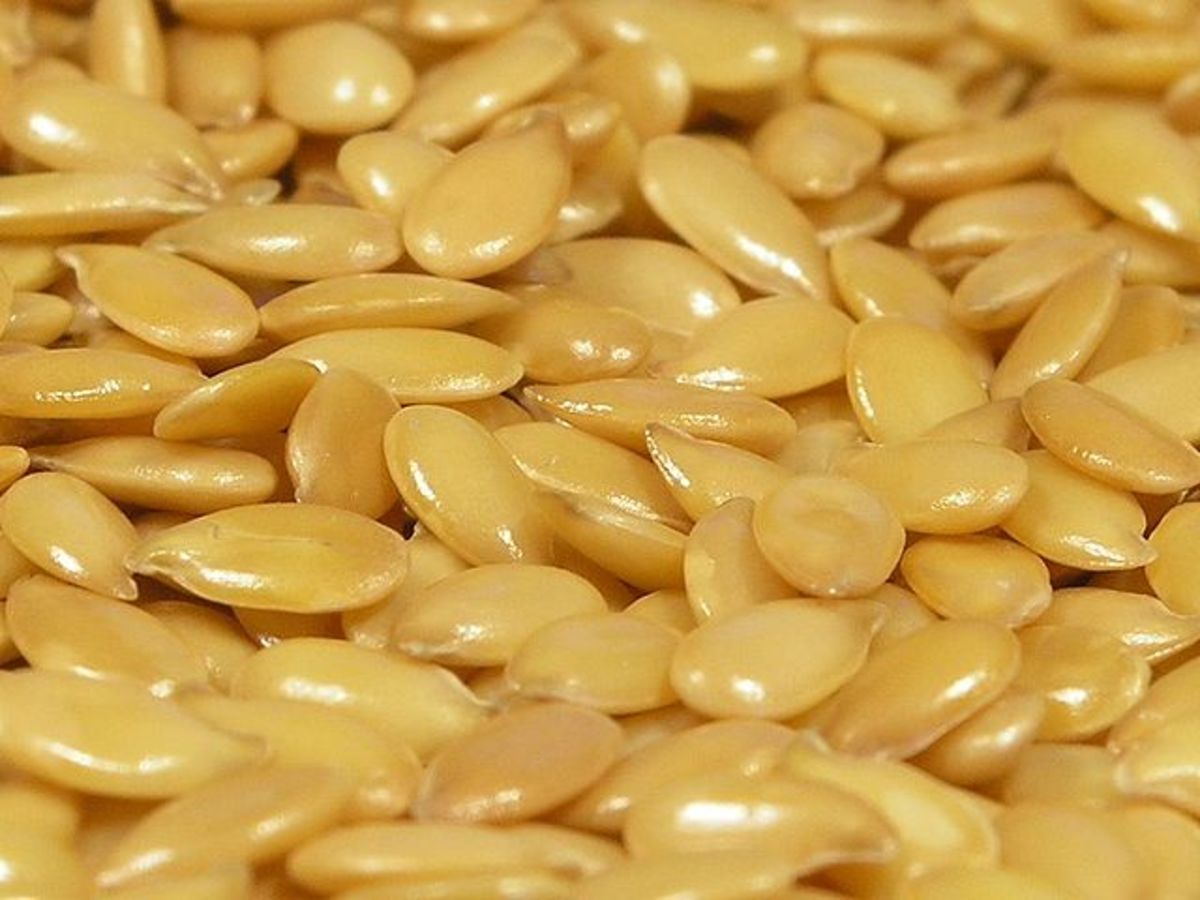"omega-6 omega-3 balance"

Omega-6 needs to be in balance in our diet
We all know about essential fatty acids - the ones our bodies cannot make themselves. You are probably eating plenty of foods that contain omega-6 every day. But could you be eating too much omega-6? Can you get too much of a good thing? Did you know that if you have too much omega-6, your body can't use all the omega-3 you are eating?
I have re-organised my kitchen to move towards getting the balance right. This lens is shares what I have learnt so far - hope it helps you to make up your mind about the best balance between omega-6 and omega-3.
There's a great book out on this, (see bottom of page) but this lens gives you a starting point if you are new to this.
Photo courtesey of Robert Brook (Flickr)
Are omega-6 and omega-3 in balance in your diet?
Exact figures are not agreed upon, but somewhere between 4:1 and 1:1 is suggested. Many people in the USA, the UK and mainland Western Europe have a ratio somewhere between 20:1 and 10:1.
There's no doubt we need omega-6 fatty acids in our diet, as well as omega-3. They are essential. We have heard a lot about the benefits of these polyunsaturated fats (PUFAs) from many scientists and doctors over the years. What we have heard little about is the relative amounts we need, of omega-6 in relation to omega-3.
Many scientists and doctors have been looking at what happens if we get the balance wrong, and Susan Allport interviewed many of them to write her book. In a nutshell, both omega-6 and omega-3 fatty acids are metabolised by the same enzymes. Omega-6 gets to the head of the queue, and if omega-6 dominates, then uptake of omega-3 is prevented.
Is the answer to down more and more omega-3? Personally, I don't think so. Excess omega-6 has other downsides, from what I have read. There is a lot of controversy about polyunsaturates and heart disease, so you may wish to read further about this. For my part, I have weighed up the evidence and come to the conclusion that I would prefer to go back to the balance that my ancestors ate, by reducing my intake of omega-6.
What are the omega-6 foods?
Omega-6 fatty acids are chiefly found in grains, seeds and nuts.
We have eaten these foods for millenia, so how come we are eating so much omega-6 now?
These foods are being used in new ways. Since the 1900s, we have discovered how to extract oils cheaply and commercially from corn (maize), sunflower, safflower and rapeseed (canola). The vegetable oils and vegetable margarines are a very new source of omega-6 in our food. The amount of omega-6 varies, canola oil is relatively low in omega-6.
Grain is also used to feed animals to a much greater extent than before. That means that the balance of fats in the beef, chicken and pork we eat is different to what it was in the days before grain became so abundant.
Vegetarian or omnivore, our omega-6 to omega-3 ratio is very different to that for most of human history. What happens when we eat such a different ratio?
How do our bodies use omega-3 and omega-6?
What health considerations does omega-6 have?
So far, we've mainly looked at omega-6. Let's look at what omega-3 does for us, and for other animals. Look at fish, look at mammals; we find omega-3 in brains and in eyes. These are places where fast communication of information is needed. Flexible omega-3 fatty acids are the 'fast fats' as Allport calls them. Our brains are largely composed of fat, and it may be that they work best on their 'regular' fat ratio that humans have eaten for thousands and thousands of years.
The most abundant 'fast fat' is alpha-linolenic acid, which is found in small quantities in plants. Plants are everywhere, herbivores get this omega-3 from eating plants. Humans can convert alpha-linolenic acid into DHA, but only very inefficiently. We rely on animal sources (strict vegetarians may prefer to get theirs from marine algae and micro-organisms). Herbivorous fish eat algae and are then eaten by carnivorous fish, collecting up EPA and DHA (the forms of omega-3 we need). So omega-3 for speedy processing, comes originally from plants, where those same speedy, flexible properties help in photosynthesis. Omega-3 has been associated with benefits in terms of heart health, lower cancer risk, and improvements in inflammatory diseases.
Omega-6 on the other hand, comes from seeds - from grains and nuts. These are where plants store food to feed the growing plant when the seed sprouts. They are in season in autumn, when animals 'fatten up for winter'. Come spring, the seed that survives, grows and starts to produce the alpha-linolenic acid that goes with growth. Based on her research, Susan Allport describes omega-6 as slowing down processes, increasing blood clotting and slowing down the metabolism. Omega-6, while essential, (we need it for healthy skin, for example) has been shown to form inflammatory substances when metabolised by the body.
You may want to read further about this, to make up your mind.
On balance, I am going for moving the ratio in my diet towards 4:1, because I believe my body has evolved to use somewhere around that ratio.

Omega-6 and Omega-3 in balance in your diet
To reduce omega-6, what foods do we need to look at?
Every fat we use in cooking, or eat, is a mixture of fats. Olive oil, for example, is around 71% oleic acid, with about 10% linoleic acid (omega-6) and 13% palmitic acid. The rest adds up to 6%, so we won't worry about that here! Cottonseed and sunflower oil have about 19% oleic acid, but have much more omega-6. To get a better balance, I am using canola oil, rather than oils with a lot of omega-6. I also use olive oil and butter. ( I could also use flax-seed oil and soya oil; both have less omega-6 or linoleic acid than most vegetable oils).
I eat meat, and some of it is grain fed (I am lucky because I can buy grass-fed beef from a neighbour's farm). I like to cook my meat with bones and fat, for flavour, but don't eat all the fat.
Saturated fats don't have a lot of omega-6. These include the semi-hard tropical oils, and fortunately, cocoa butter too! So, while I mostly avoid oils and margarines high in polyunsaturated fats (omega-6s) and all those baked goods that state 'vegetable fat' or 'vegetable oil' on their ingredients list, good quality chocolate is still a ready-to-eat treat. I don't worry about a handful of nuts here and there, either. I get much more pleasure getting my omega-6 that way than from eating margarine on my bread.
Green vegetables are something we most of us could use a few more of, and they have alpha-linolenic acid (omega-3, though less useful to us) so they help the ratio too.
Hope that helps you get an idea of one way to change the ratio of omega-6 to omega-3 towards a more traditional balance. If you'd like a bit more on the subject but don't want to read a whole book, contact me via my Squidoo email for MORE INFORMATION - put 'Omega' in the subject line.
This is the book I recommend, should you want to read the full story:








